In the first of these two articles commemorating the centenary of the death of the great Georgian artist Niko Pirosmani (1862–1918), I looked at his paintings of animals. This article considers his other paintings.
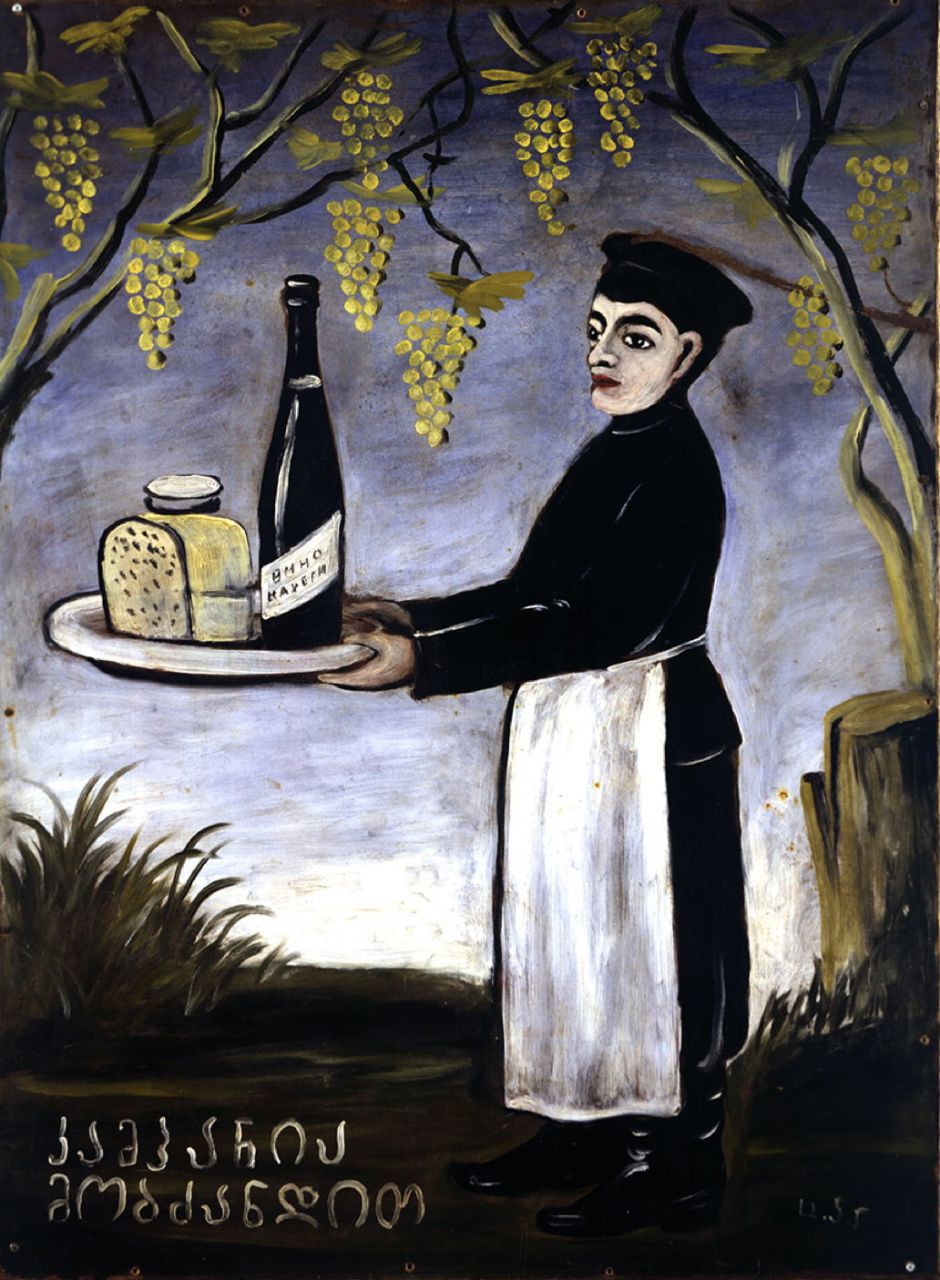
Pirosmani’s Company Visit from 1917 was, like his sign paintings, made on metal, and I wonder if it wasn’t intended to be the sign of one of the taverns which he stayed at during the final years of his life. It shows a waiter taking a tray of Georgian wine and bread to a customer, with a background of grapes.
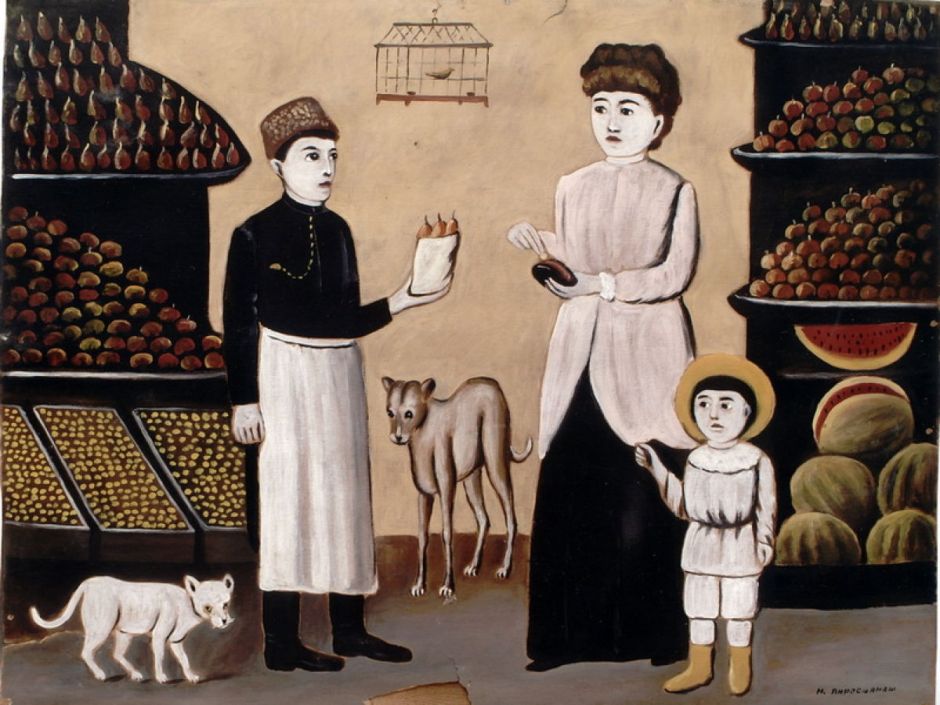
A Tatar Fruiterer from about 1910-12 is one of his more complex paintings, and shows a fruit shop in the capital, Tbilisi, where a mother, accompanied by her young child, is just paying for a bag full of fruit. Included are three domestic animals: a small bird in a cage, a large dog, and a smaller animal which is most probably a cat.

Vintage, from 1906, is another more complex work, showing the grape harvest at the end of the summer, and the processing of grapes to make wine. It is quite black because it was painted on oilcloth, whose heated oil makes it very dark in colour.
Accompanying the scenes of grape harvest and processing is the start of an al fresco feast, with one animal being slaughtered, another roasting on a spit, and a group already sat down ready to eat and drink.
Pirosmani was particularly fond of painting feasts, which must have been the highlight of his social calendar.
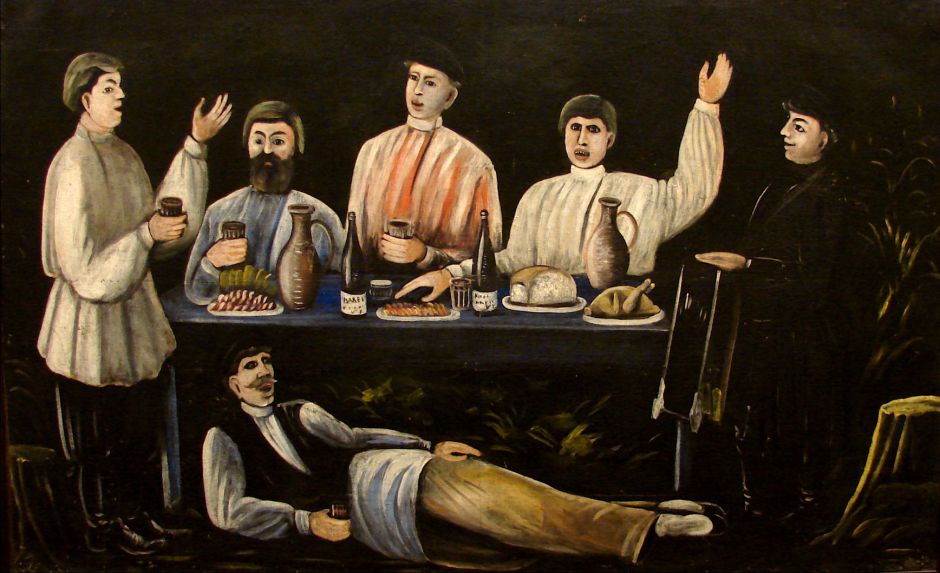
Feast of the Malakans or Molokani Carousing from about 1905 shows a group eating, drinking and singing together around a table. Most of Pirosmani’s paintings of feasts adhere to the same formal composition, like this.

The Feast shows another group, using drinking horns for their wine.

Feast of Merchants from Tbilisi with a Gramophone is a fascinating but sadly undated painting showing the introduction of new technolgical advances in the form of a wind-up gramophone, phonograph or record-player with its early loudspeaker horn. This would have been used to provide the group with musical entertainment through their meal. Note, though, that there are still traditional Georgian musical instruments hanging on the wall behind.
The gramophone was the successor to the original wax cylinder phonograph, and was introduced during the 1890s. It was the first popular device to be able to play commercial pre-recorded music, and almost certainly dates the painting to after 1900.
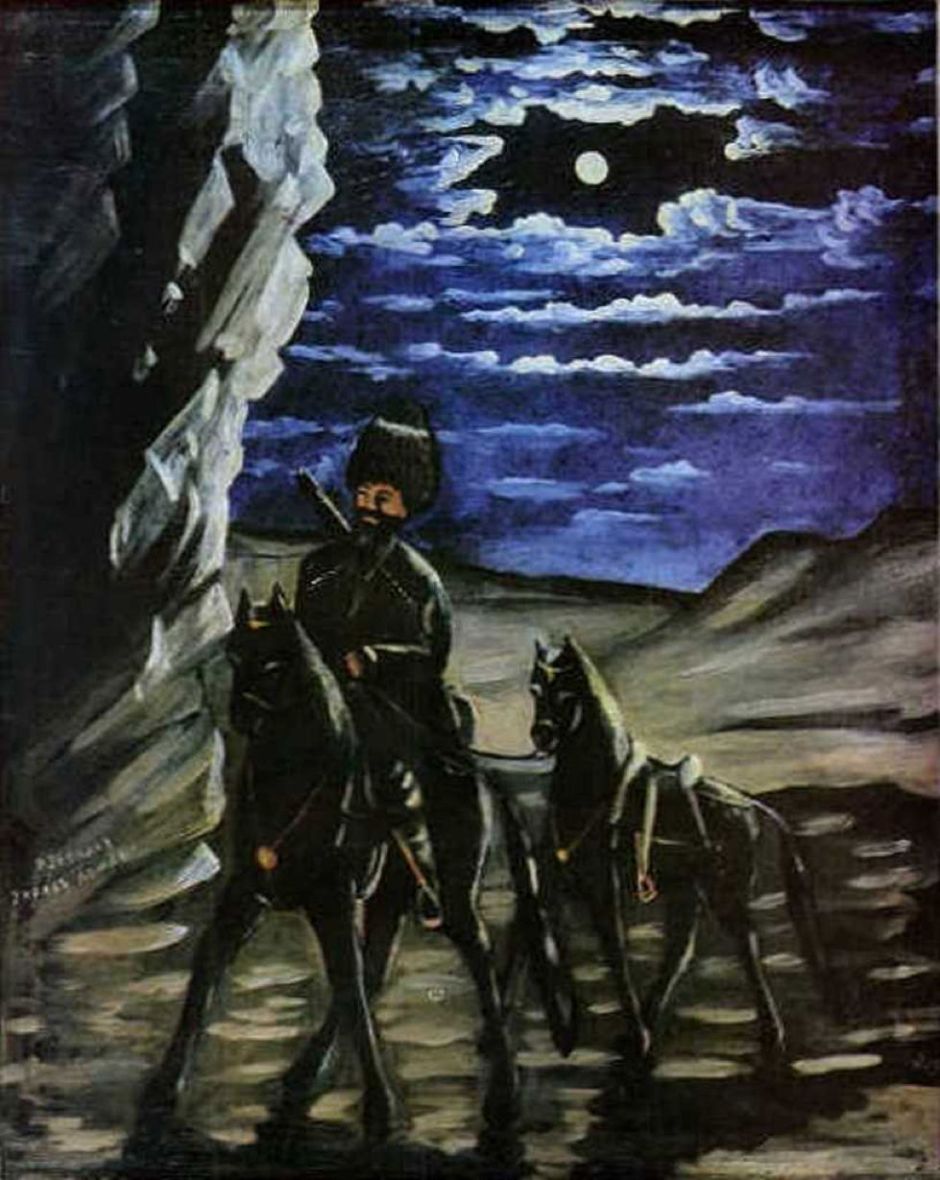
A Robber with a Stolen Horse is another atmospheric nocturne with backlighting from a full moon. Pirosmani depicts the moon as being quite close to its natural size, rather than enlarged as in many other ‘naïve’ paintings, and shows the cast shadows of the horses.

Georgia has had railways since 1871, when its first route opened near the Black Sea in the west of the country. This was extended east through Kakhetia by 1883, to link with Baku in Azerbaijan, allowing the export of Caspian oil through the Georgian port of Batumi. Pirosmani’s nocturne of Train in Kakhetia from about 1895-1918 undoubtedly relied on his own experience working on the railway in the early 1890s.
It shows the loading or unloading of animal carcases and wine, in casks and amphora, on the plain below the foothills of the eastern Caucasus Mountains.

Six-Scene Panel is one of Pirosmani’s largest and most ambitious works painted entirely on oilcloth. The panels don’t appear to show a single continuous narrative, but six scenes which the artist linked together to describe the land of his birth. From the top left, they show feasting on the bank of a river; cattle and wagons in more mountainous terrain, probably in the north of the country; feasting during the grape harvest; (bottom row) feasting in the country; the funicular railway in Tbilisi, which was built by a Belgian and opened in 1905; another view of Tbilisi.
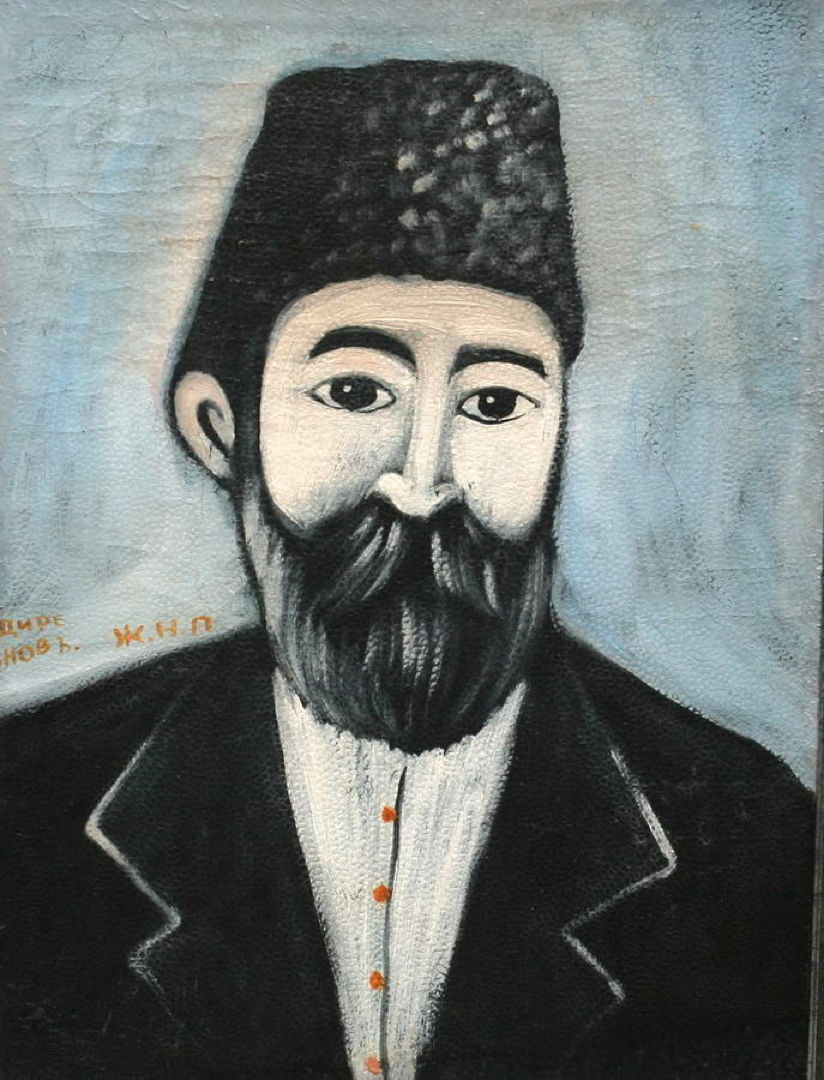
Self-portrait (1900) is one of several which he made during his lifetime. In 1900, Pirosmani went missing for some months, following which he adopted a vagrant lifestyle, living sporadically in taverns where he paid for his keep with paintings.

In about 1905, a French singer came to Tbilisi, and Pirosmani tried to court her. Although he doesn’t appear to have been successful, and the relationship never went any further, in 1909 he painted a portrait of her in The Actress Margarita, which is one of his few surviving paintings on canvas.
In 1913, Pirosmani’s paintings were noticed by a Russian poet and artists who had come to Georgia in search of “naïve” art. They promoted Pirosmani’s paintings in Moscow, where four examples of his work were exhibited alongside those of other self-taught artists.

Pirosmani’s Portrait of Ilya Zdanevich was commissioned by one of the Russian artists, its subject, who was a Futurist.

The Wounded Soldier is one of Pirosmani’s oil paintings on cardboard, which was only discovered in 2011.
Pirosmani’s first solo exhibition was held in Tbilisi in 1916, but by that time he was in decline due to his vagrancy and alcoholism. He died in poverty on a date between 7 and 10 April 1918, probably on 9 April.
Although he was not forgotten in Georgia, his international reputation was initiated by an exhibition in Kiev in 1931, and his popularity rose during the 1950s.
Ilya Zdanevich fled Russia in the 1930s, and settled in Paris, where he seems to have introduced Pablo Picasso to Pirosmani’s art. Picasso, in turn, is believed to have painted two posthumous portraits of Pirosmani, of which one dated 1972 is currently known. Inevitably, Picasso’s Portrait of Pirosmani (1972) is painted using thick black straight lines, and neither resembles Pirosmani nor any of his work, but it reinforced the Georgian’s reputation, and inflated the prices paid for his paintings at auction.
Exhibition
From 26 October 2018 until 27 January 2019, the Albertina in Vienna, Austria, is showing a “comprehensive” exhibition of Pirosmani’s paintings. Full details are here.

